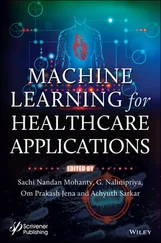The term inverse deduction commonly appears as induction. In symbolic reasoning, deduction expands the realm of human knowledge, while induction raises the level of human knowledge. Induction commonly opens new fields of exploration, while deduction explores those fields. However, the most important consideration is that induction is the science portion of this type of reasoning, while deduction is the engineering. The two strategies work hand in hand to solve problems by first opening a field of potential exploration to solve the problem and then exploring that field to determine whether it does, in fact, solve it.
As an example of this strategy, deduction would say that if a tree is green and green trees are alive, the tree must be alive. When thinking about induction, you would say that the tree is green and the tree is also alive; therefore, green trees are alive. Induction provides the answer to what knowledge is missing given a known input and output.
Connections modelled on the brain’s neurons
The connectionists are perhaps the most famous of the five tribes. This tribe strives to reproduce the brain’s functions using silicon instead of neurons. Essentially, each of the neurons (created as an algorithm that models the real-world counterpart) solves a small piece of the problem, and the use of many neurons in parallel solves the problem as a whole.
The use of backpropagation, or backward propagation of errors, seeks to determine the conditions under which errors are removed from networks built to resemble the human neurons by changing the weights (how much a particular input figures into the result) and biases (which features are selected) of the network. The goal is to continue changing the weights and biases until such time as the actual output matches the target output. At this point, the artificial neuron fires and passes its solution along to the next neuron in line. The solution created by just one neuron is only part of the whole solution. Each neuron passes information to the next neuron in line until the group of neurons creates a final output.
Evolutionary algorithms that test variation
The evolutionaries rely on the principles of evolution to solve problems. In other words, this strategy is based on the survival of the fittest (removing any solutions that don’t match the desired output). A fitness function determines the viability of each function in solving a problem.
Using a tree structure, the solution method looks for the best solution based on function output. The winner of each level of evolution gets to build the next-level functions. The idea is that the next level will get closer to solving the problem but may not solve it completely, which means that another level is needed. This particular tribe relies heavily on recursion and languages that strongly support recursion to solve problems. An interesting output of this strategy has been algorithms that evolve: One generation of algorithms actually builds the next generation.
The Bayesians use various statistical methods to solve problems. Given that statistical methods can create more than one apparently correct solution, the choice of a function becomes one of determining which function has the highest probability of succeeding. For example, when using these techniques, you can accept a set of symptoms as input and decide the probability that a particular disease will result from the symptoms as output. Given that multiple diseases have the same symptoms, the probability is important because a user will see some in which a lower probability output is actually the correct output for a given circumstance.
Ultimately, this tribe supports the idea of never quite trusting any hypothesis (a result that someone has given you) completely without seeing the evidence used to make it (the input the other person used to make the hypothesis). Analyzing the evidence proves or disproves the hypothesis that it supports. Consequently, it isn’t possible to determine which disease someone has until you test all the symptoms. One of the most recognizable outputs from this tribe is the spam filter.
Systems that learn by analogy
The analogyzers use kernel machines to recognize patterns in data. By recognizing the pattern of one set of inputs and comparing it to the pattern of a known output, you can create a problem solution. The goal is to use similarity to determine the best solution to a problem. It’s the kind of reasoning that determines that using a particular solution worked in a given circumstance at some previous time; therefore, using that solution for a similar set of circumstances should also work. One of the most recognizable outputs from this tribe is recommender systems. For example, when you get on Amazon and buy a product, the recommender system comes up with other, related products that you might also want to buy.
Defining What Training Means
Many people are somewhat used to the idea that applications start with a function, accept data as input, and then provide a result. For example, a programmer might create a function called Add()that accepts two values as input, such as 1and 2. The result of Add()is 3. The output of this process is a value. In the past, writing a program meant understanding the function used to manipulate data to create a given result with certain inputs.
Machine learning turns this process around. In this case, you know that you have inputs, such as 1and 2. You also know that the desired result is 3. However, you don’t know what function to apply to create the desired result. Training provides a learner algorithm with all sorts of examples of the desired inputs and results expected from those inputs. The learner then uses this input to create a function. In other words, training is the process whereby the learner algorithm maps a flexible function to the data. The output is typically the probability of a certain class or a numeric value.
 A single learner algorithm can learn many different things, but not every algorithm is suited for certain tasks. Some algorithms are general enough that they can play chess, recognize faces on Facebook, and diagnose cancer in patients. An algorithm reduces the data inputs and the expected results of those inputs to a function in every case, but the function is specific to the kind of task you want the algorithm to perform.
A single learner algorithm can learn many different things, but not every algorithm is suited for certain tasks. Some algorithms are general enough that they can play chess, recognize faces on Facebook, and diagnose cancer in patients. An algorithm reduces the data inputs and the expected results of those inputs to a function in every case, but the function is specific to the kind of task you want the algorithm to perform.
The secret to machine learning is generalization. The goal is to generalize the output function so that it works on data beyond the training set. For example, consider a spam filter. Your dictionary contains 100,000 words (actually a small dictionary). A limited training dataset of 4,000 or 5,000 word combinations must create a generalized function that can then find spam in the 2 100000combinations that the function will see when working with actual data.
When viewed from this perspective, training might seem impossible and learning even worse. However, to create this generalized function, the learner algorithm relies on just three components:
Representation: The learner algorithm creates a model, which is a function that will produce a given result for specific inputs. The representation is a set of models that a learner algorithm can learn. In other words, the learner algorithm must create a model that will produce the desired results from the input data. If the learner algorithm can’t perform this task, it can’t learn from the data and the data is outside the hypothesis space of the learner algorithm. Part of the representation is to discover which features (data elements within the data source) to use for the learning process.
Читать дальше

 A single learner algorithm can learn many different things, but not every algorithm is suited for certain tasks. Some algorithms are general enough that they can play chess, recognize faces on Facebook, and diagnose cancer in patients. An algorithm reduces the data inputs and the expected results of those inputs to a function in every case, but the function is specific to the kind of task you want the algorithm to perform.
A single learner algorithm can learn many different things, but not every algorithm is suited for certain tasks. Some algorithms are general enough that they can play chess, recognize faces on Facebook, and diagnose cancer in patients. An algorithm reduces the data inputs and the expected results of those inputs to a function in every case, but the function is specific to the kind of task you want the algorithm to perform.










